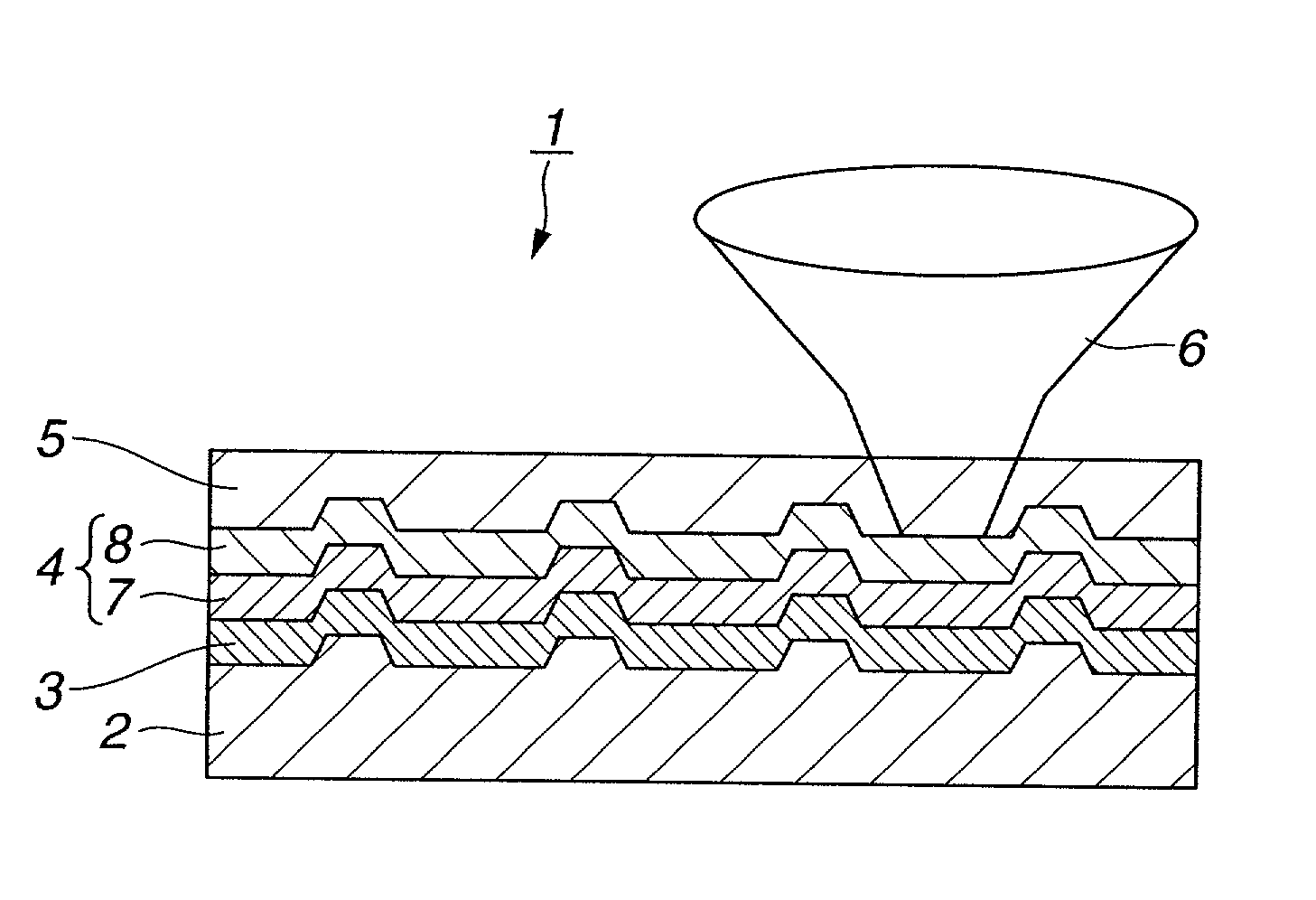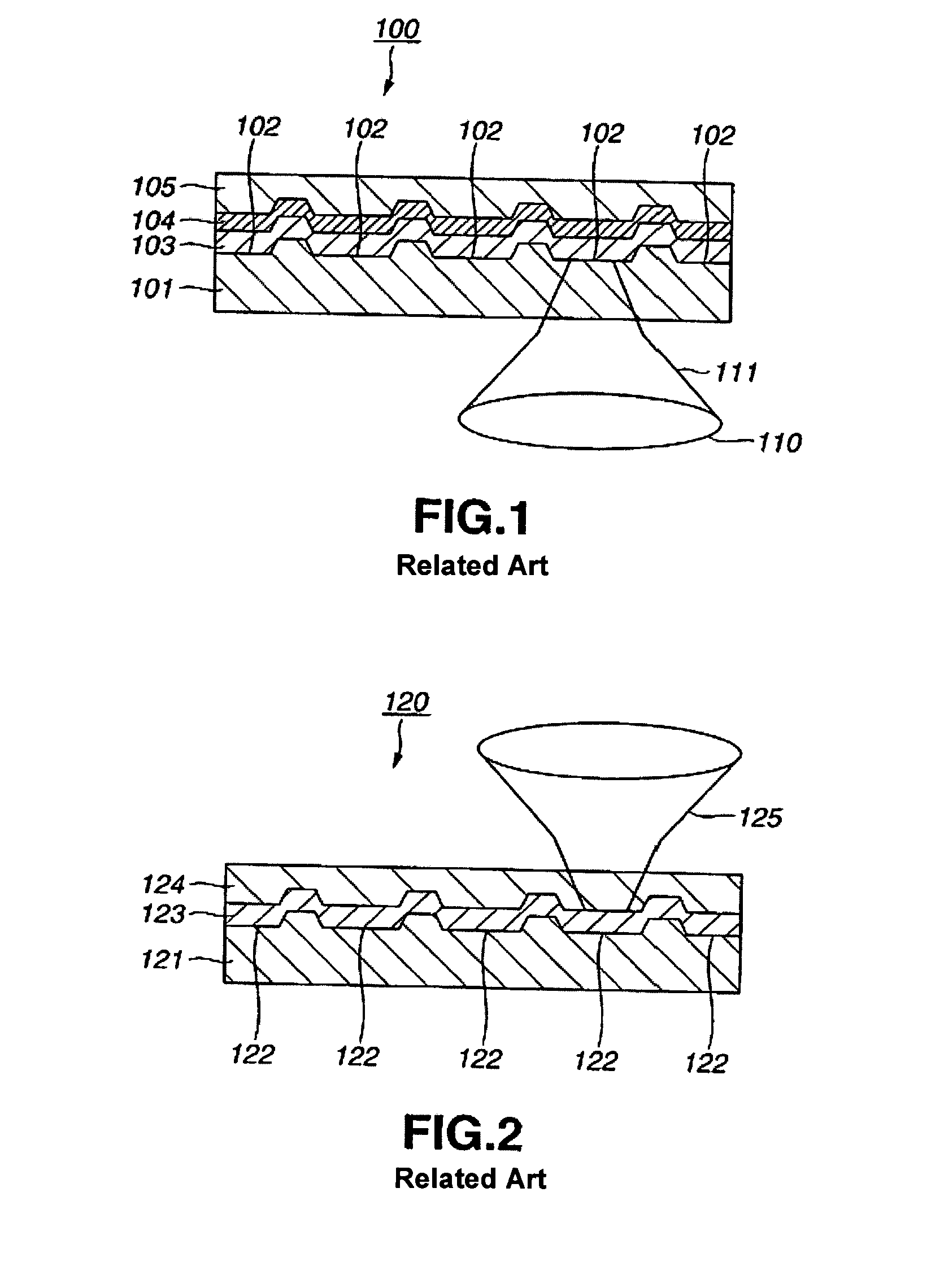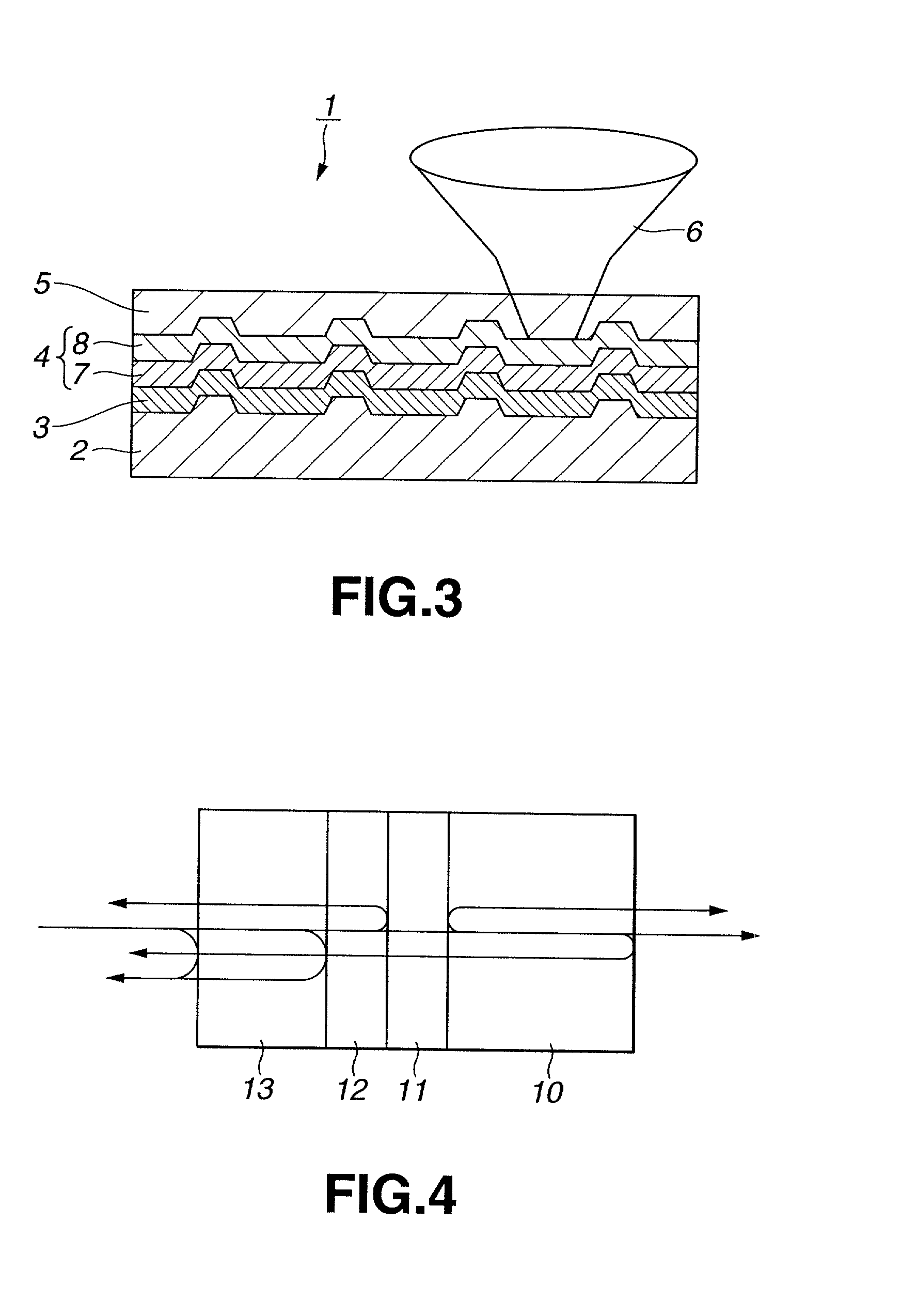Optical storage medium having an organic recording layer attached to a dielectric layer
a technology of organic recording layer and optical storage medium, which is applied in the field of optical discs, can solve the problems of insufficient heat or weather resistance, inability to acquire high reflectance of data recording layer, and few organic materials, and achieve the effect of reducing the optical enhancement effect, and reducing the cost of production
- Summary
- Abstract
- Description
- Claims
- Application Information
AI Technical Summary
Benefits of technology
Problems solved by technology
Method used
Image
Examples
example
[0090]An optical disc was made according to the present invention, and its initial reflectance and signal-reproducing characteristic were determined, as will be described below.
[0091]First, a polycarbonate substrate having a thickness of 1.2 mm was made by means of injection molding.
[0092]Next, the polycarbonate substrate was coated with a solution prepared by dissolving a cyanine-based photosensitive organic dye in tetrafluoropropanol, by means of spin coating. A coating of about 40 nm thick was thereby formed on the polycarbonate substrate.
[0093]Radiofrequency (RF) sputtering was performed on the resultant structure by using a silicon target, Ar gas and N2 gas, forming a transparent Si3N4 film having a thickness of 5 nm. Ar gas and N2 gas were used in amounts of 32 sccm and 8 sccm, respectively. The total gas pressure was 3 mTorr, and the RF power was 60 mW.
[0094]Then, the N2 gas was replaced by O2 gas and reactive sputtering was carried out. A transparent SiO2 film having a thick...
PUM
| Property | Measurement | Unit |
|---|---|---|
| reflectance | aaaaa | aaaaa |
| reflectance | aaaaa | aaaaa |
| wavelength | aaaaa | aaaaa |
Abstract
Description
Claims
Application Information
 Login to View More
Login to View More - R&D
- Intellectual Property
- Life Sciences
- Materials
- Tech Scout
- Unparalleled Data Quality
- Higher Quality Content
- 60% Fewer Hallucinations
Browse by: Latest US Patents, China's latest patents, Technical Efficacy Thesaurus, Application Domain, Technology Topic, Popular Technical Reports.
© 2025 PatSnap. All rights reserved.Legal|Privacy policy|Modern Slavery Act Transparency Statement|Sitemap|About US| Contact US: help@patsnap.com



